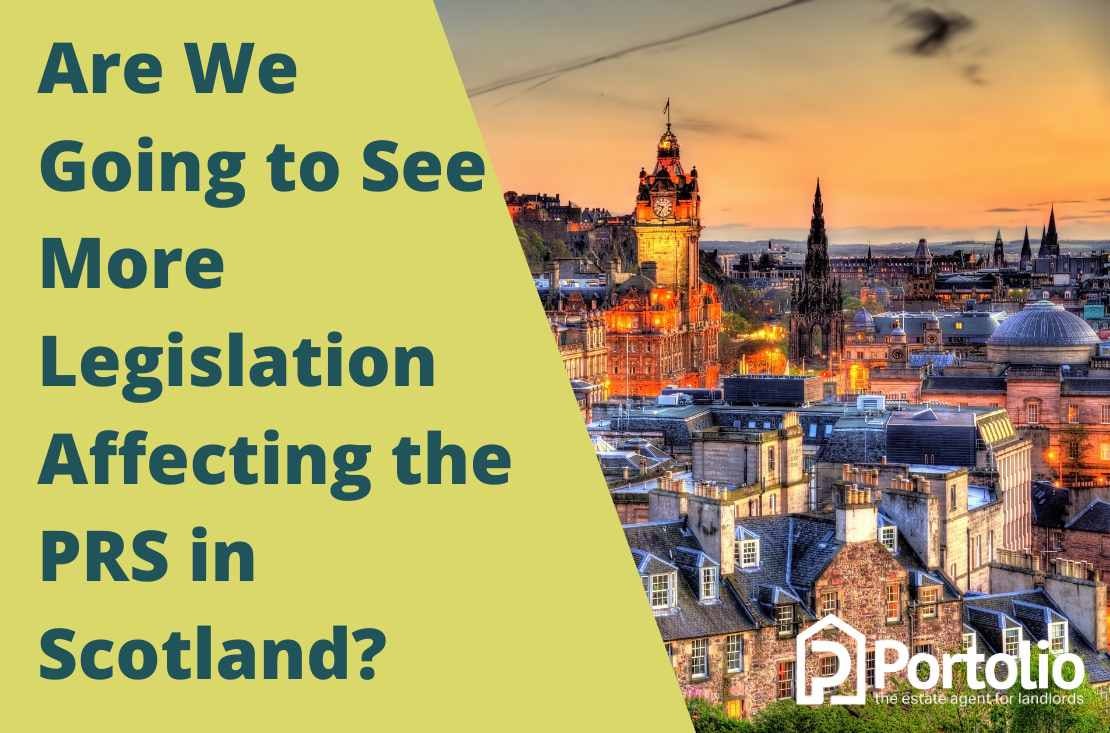The past 12 months has seen the introduction of significant legislation affecting the PRS (Private Rented Sector) in Scotland. Restrictions on rent rises and evictions have affected landlords across the country.
With the passing of the six-month anniversary of the initial restrictions, the Scottish Government has decided to put amended restrictions in place for another six months, however these restrictions affect private and social rentals quite differently.
As an experienced property professional I know how much these restrictions have alarmed and affected landlords and potential investors, so we’re going to examine those legislative changes in some detail.
The background
“A combined rent freeze and moratorium on evictions to help people through the cost crisis has been announced as the centrepiece of the 2022-23 Programme for Government (PfG).”
The unprecedented cost-of-living crisis provided the rationale for the initial rent freeze, introduced in October 2022. It was initially scheduled to last for six months, with the option to renew for two further periods of six months.
As the expiry of this initial period neared, the Scottish Government replaced it with a rent cap, to remain in place until September 2023. This revised legislation treated different rental sectors differently.

How did this affect the PRS in Scotland?
Initially there was a rash of doom and gloom stories in the press, predicting the imminent demise of the private rented sector in Scotland as landlords threw up their hands in despair and hurriedly sold off their properties.
The truth was rather different, and perhaps not quite what was intended. Indeed, according to Landlord Today, the whole sorry affair appears to have badly backfired, with average rent rising to an all-time high in Q4 of 2022.
That smacks of the law of unintended consequences. However it disguises the fact that many private landlords have kept rent increases on existing tenancies as low as possible, generally below the level of inflation.
On the other hand, our recent pollsuggests that, regardless of whether or not they had intended to raise rents, the vast majority of private landlords intend to do so as soon as they legally can.
Changes from April 2023
From April 2023, private landlords are limited to a rent increase of 3% for mid-term tenants, with the possibility of being allowed up to a 6% increase if the landlord can demonstrate that their property costs have increased.
These circumstances are laid out by the Scottish government, as is the process and evidence required by Rent Services Scotland, who will decide whether the application is reasonable.
While this additional provision is better than nothing, one might understand if Scottish landlords saw their future as an endless series of hoops to be jumped through.
This feeling is doubtless exacerbated by the different treatment that social rentals are receiving under the same legislation.

Different treatment of different sectors
SPICe (Scottish Parliament Information Centre) has written at length about legislation affecting the PRS in Scotland. In it they highlight the disparity of treatment between the PRS and the social rented sector.
What is apparent is that other sectors in the rental space seem to have managed to persuade the Scottish Government to allow them some flexibility, using arguments that apply equally to the private sector.
The social rented sector has voluntarily agreed to limit rent increases to below inflation. Given that at the time they were holding discussions with the Scottish Government, inflation was 11%, they had considerable scope.
It’s worth noting that their tenants were less likely to be affected by all of these restrictions, as rent in the social sector tends to be set and reviewed in April each year.
Whether we should be drawing any conclusions from this different approach to the private and social sectors is open to discussion. However the private sector is currently engaged in seeking a judicial review of the government’s actions.
The key arguments of the petition for review are listed below:
- The rent control applies irrespective of the financial position of both the tenant and landlord.
- The recent decision by the Scottish Government to remove the cap for social landlords means a well-off individual renting in the private sector is provided financial protection not available to someone in more challenging financial circumstances in the social sector.
- In the decision to remove the rent control in the social sector, the Scottish Government acknowledges the need for maintenance of these properties but has not given the same consideration to landlords in the private sector.
- The law does not make any distinction or provide relief based on different circumstances of landlords, between larger, institutional companies who might be able to shoulder increased costs, and individual landlords who cannot.
- The eviction ban creates a delay in addressing matters such as arrears which adversely impacts landlord cash flow culminating in a reduction in capital value.
On the face of it, the private sector is being denied relief which has been deemed appropriate for other rental sectors.
The PRS represents about 14% of homes in Scotland, while social housing accounts for 24%. Are private landlords being denied assistance simply because they are a smaller percentage of the housing total?
We would hope that this isn’t the case, but their relatively small size, and the largely disparate nature of private landlords appears to make it harder for them to effectively lobby the government.

What are the predicted effects of these continuing restrictions on the PRS?
Still the most prevalent prediction in the face of these legislative challenges is that private landlords will simply sell off properties which are no longer financially viable. While often heard, there are those who are dubious about this threat.
“It is a threat that landlords make often. But it’s not something that we’ve seen happening in huge amounts with the rent freeze at the moment,” says Living Rents’ national secretary, Aditi Jehangir.
Should landlords decide to sell, despite Jehangir’s doubts, the rental market will contract, and in the face of continuing high demand, rents will continue to be driven higher as tenants scrabble over fewer properties.
Additionally, with less money available, it is likely that preventative maintenance has been allowed to slip in places and more active steps, such as insulation may be put on hold due to the rent cap.
This doesn’t benefit either landlord or tenant, and it is worth noting that this was exactly the argument used by the social rented sector to gain exemption from the cap.
Will we see an end to these restrictions?
The legislation currently in force has the potential to be extended for another six month period beyond September 2023, should the Scottish Government deem it necessary.
One could also argue that, like any legislation, if the government of the day decides there is a need, they can introduce further legislation for the period beyond March 2024.
On the other hand, if we see an overall economic upturn, ending the cost of living crisis and benefiting the majority of the population, there may be no need for further regulation of the sector. Time will tell.
Advice from the property pros

It has been, and continues to be, a difficult time for many in this country. While the legislation we’ve discussed may have been well-intentioned, there is little indication that it has materially benefitted those it was meant to help.
Tenants of social housing will find out shortly what their rent increase will be; we’re expecting that figure to average around 6%.
There is no way to know for certain whether this is better or worse than it might have been had the rent cap not been in place.
Private landlords have simply had to endure the legislation affecting the PRS in Scotland – unless they choose to quit and exit the market, there is little they can do to ameliorate their situation.
Despite all of this, the underlying market is healthy, with demand for good-quality rented accommodation remaining high due to the overall housing shortage. There is no reason to assume that will change in the short or medium term.
In summary…
It would be difficult to characterise the actions of the Scottish government as an unqualified success when it comes to legislation affecting the PRS. No doubt some will question whether or not they have been any kind of success at all!
Their timing, nature and uneven application across the rental sector as a whole in Scotland must raise some questions about whether this was window dressing or a genuine attempt to address a real problem.
As far as the private rented sector is concerned, there is no doubt that the past months may have given some pause for thought, however there are still genuine opportunities for those looking to invest in buy-to-let property.
If you’re considering dipping a toe into the property pool, get in touch to arrange a chat.
We have years of experience in the Scottish and English property market and we can help you decide what the best options are for you.
Thank you for reading, and let us know if you have any questions regarding legislation affecting the PRS!
Written by Ross MacDonald, Director of Sales & Cofounder of Portolio
Get in touch on 07388 361 564 or email to [email protected]



Comments